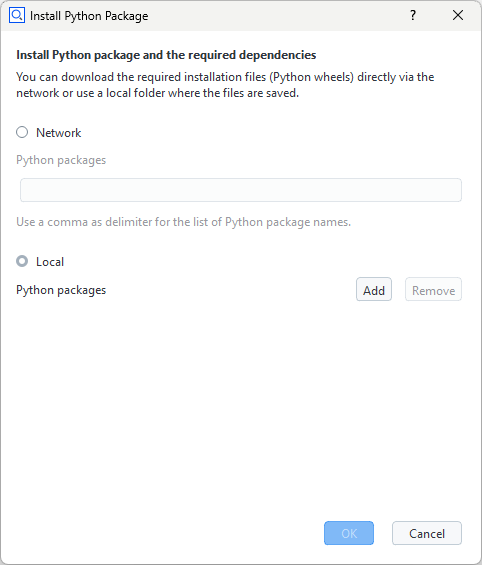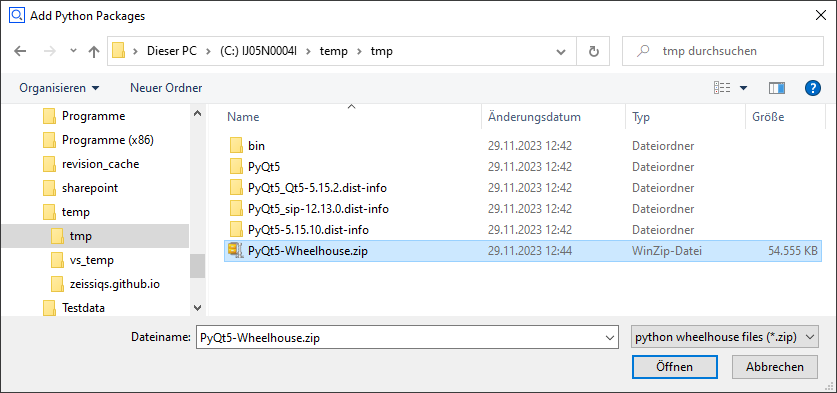Using Python wheelhouses
Abstract: Usually installing Python packages via the App Explorer in the App Editor works just fine. In certain cases, the installation succeeds but the App will fail with the error message
The specified module could not be found.This could be caused by inter-wheel dependencies or by hardcoded paths in packages, which are different from the ones used by the ZEISS INSPECT software. This is solved by creating a Python wheelhouse, which is installed in the same way as a normal Python wheel. Technically, a wheelhouse is a ZIP archive of Python wheels.
Creating a wheelhouse
PyQt5 is used as a real-world example here.
Install all required Python wheels into a temporary folder
python -m pip install PyQt5 --target=tmp --upgrade
Create a ZIP archive of all files below the temporary folder
E.g. using 7-Zip
cd tmp
"C:\Program Files\7-Zip\7z.exe" a PyQt5-Wheelhouse.zip *
Install the wheelhouse using the App Explorer


Note
For some reason, PyQt5.sip (a Python wheel required by PyQt5) could not be used from the Python wheelhouse, but had to be installed additionally using the App Explorer.